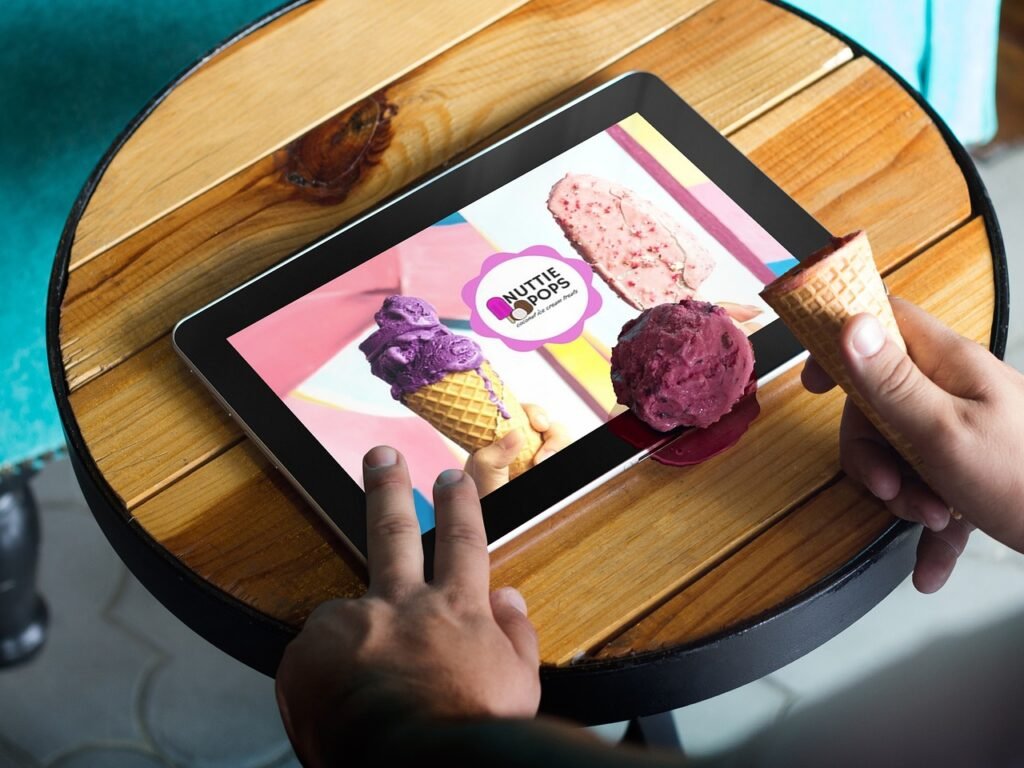This Article has been revised, edited and added to, by Poulomi Chakraborty.
- Building Trust and Credibility
- Creating a Unified Strategy
- Examples of Successful Integration of Content Marketing and Public Relations
- Tactical Approaches for Integrating Content Marketing and Public Relations
- Overcoming Challenges in Integrating Content Marketing and Public Relations
- Future Trends in Content Marketing and Public Relations
- Practical Steps for Integrating Content Marketing and Public Relations
- Building a Strong Brand Identity Through Integrated Efforts
- Conclusion
In the fast-paced world of digital communication, the lines between content marketing and public relations (PR) are increasingly blurred. Both disciplines aim to build and maintain a positive image for brands, but they do so in distinct ways. Content marketing focuses on creating valuable, relevant content to attract and engage a target audience. Public relations, on the other hand, concentrates on managing a brand’s reputation through media relations, crisis management, and strategic communication. When these two strategies converge, they can create powerful synergies that amplify brand visibility, trust, and loyalty.
In recent years, the digital landscape has evolved dramatically, transforming the way businesses communicate with their audiences. The rise of social media, blogs, and other online platforms has given brands new opportunities to reach their target markets directly. This shift has brought content marketing and public relations closer together, as both fields now rely heavily on creating and distributing content that resonates with audiences. The intersection of these two disciplines is where the magic happens, blending the storytelling prowess of PR with the strategic, data-driven approach of content marketing.
Building Trust and Credibility

One of the primary goals of both content marketing and public relations is to build trust and credibility. In content marketing, this is achieved by providing valuable information that addresses the needs and interests of the audience.
High-quality content, such as blog posts, videos, and infographics, can position a brand as an industry leader and a trusted source of information. This consistent delivery of valuable content helps to foster long-term relationships with customers and prospects.
Public relations, on the other hand, builds trust and credibility by securing third-party endorsements and media coverage. When a brand is featured in reputable news outlets, it gains credibility in the eyes of the audience.
PR professionals work to get positive stories about their brand published, manage relationships with journalists, and handle any negative publicity that may arise. By doing so, they help to create a favorable public image and enhance the brand’s reputation.
At the intersection of content marketing and public relations, brands can leverage the strengths of both approaches to maximize their impact. For example, a well-crafted press release that tells a compelling story can be shared on social media and repurposed into blog posts, infographics, or videos.
This not only amplifies the reach of the message but also reinforces the brand’s credibility by showcasing its expertise across multiple channels.
Engaging the Audience
Engagement is a critical metric for both content marketing and public relations. Content marketing engages audiences by delivering content that is not only informative but also entertaining and inspiring.
Brands use storytelling techniques to create emotional connections with their audience, making the content more memorable and shareable. The goal is to keep the audience coming back for more, ultimately driving conversions and customer loyalty.
Public relations also focuses on engagement but from a slightly different angle. PR professionals aim to generate buzz and excitement around a brand through strategic communication and media relations.
They craft messages that resonate with the audience and work to get those messages amplified by influencers and media outlets. By doing so, they create a sense of excitement and anticipation that keeps the audience engaged with the brand.
When content marketing and public relations work together, they can create a powerful engagement strategy. For instance, a brand might launch a new product with a comprehensive content marketing campaign that includes blog posts, videos, and social media content.
At the same time, the PR team might work to secure media coverage and endorsements from industry influencers. This coordinated effort ensures that the brand’s message reaches a wider audience and generates more engagement across multiple channels.
Measuring Success
Measurement is crucial in both content marketing and public relations to understand the effectiveness of strategies and to make data-driven decisions. In content marketing, success is often measured through metrics such as website traffic, engagement rates, lead generation, and conversions.
Analytics tools provide insights into how content is performing, helping marketers to refine their strategies and optimize their content for better results.
Public relations, traditionally, has faced challenges in measurement due to its focus on intangible outcomes like reputation and brand perception. However, with the advent of digital PR and advanced analytics, it’s now possible to track the impact of PR activities more accurately.
Metrics such as media impressions, sentiment analysis, and share of voice provide valuable insights into the effectiveness of PR campaigns.
At the intersection of content marketing and public relations, brands can leverage a comprehensive set of metrics to measure success. By integrating data from both fields, they can gain a holistic view of their marketing and PR efforts.
For example, they can track how a PR-driven media mention drives traffic to their website or how a piece of content shared on social media impacts brand sentiment. This integrated approach enables brands to make more informed decisions and continuously improve their strategies.
Creating a Unified Strategy

Developing a unified strategy that combines content marketing and public relations can maximize the strengths of both disciplines and deliver more impactful results. By aligning the goals, messaging, and tactics of content marketing and PR, brands can create a cohesive and consistent narrative that resonates with their audience.
Aligning Goals and Objectives
The first step in creating a unified strategy is to align the goals and objectives of content marketing and public relations. While each discipline may have its own specific goals, they should ultimately contribute to the broader objectives of the brand.
For example, both content marketing and PR might aim to increase brand awareness, build trust, and drive customer engagement. By aligning these goals, brands can ensure that their efforts are complementary and mutually reinforcing.
To achieve this alignment, it’s important to foster collaboration and communication between content marketing and PR teams. Regular meetings and joint planning sessions can help both teams understand each other’s objectives and work together to achieve common goals.
This collaborative approach ensures that everyone is on the same page and working towards the same outcomes.
Crafting a Consistent Message
Consistency is key to building a strong brand identity. When content marketing and PR work together, it’s essential to craft a consistent message that reflects the brand’s values, mission, and personality.
This message should be woven into all content and communication efforts, from blog posts and social media updates to press releases and media pitches.
A unified message helps to create a coherent brand narrative that resonates with the audience. It ensures that all content and PR activities reinforce each other and build a strong, recognizable brand identity.
To achieve this consistency, brands should develop clear messaging guidelines that outline the key themes, tone, and voice to be used in all communications. These guidelines can serve as a reference for both content marketing and PR teams, ensuring that all messaging aligns with the brand’s overall strategy.
Leveraging Storytelling
Storytelling is a powerful tool that can be used to connect with audiences on an emotional level. Both content marketing and public relations rely on storytelling to engage their audience and convey key messages. By leveraging storytelling techniques, brands can create compelling narratives that captivate their audience and drive engagement.
In content marketing, storytelling involves creating content that tells a story, whether it’s a customer success story, a behind-the-scenes look at the brand, or an inspiring tale related to the industry. These stories help to humanize the brand and create a deeper connection with the audience.
In public relations, storytelling often involves crafting narratives that position the brand in a positive light and generate media interest. PR professionals use storytelling to frame their brand’s news, achievements, and initiatives in a way that captures the attention of journalists and influencers.
When content marketing and PR collaborate on storytelling, they can create powerful, multifaceted narratives that resonate across different channels. For example, a brand might develop a content series that highlights the personal stories of its employees or customers. The PR team can then pitch these stories to media outlets, securing coverage that amplifies the brand’s message and reaches a wider audience.
Utilizing Integrated Campaigns
Integrated campaigns are a key component of a unified strategy that combines content marketing and public relations. These campaigns involve coordinating content marketing and PR efforts to achieve a common goal.
By working together, content marketing and PR teams can create campaigns that deliver a consistent message across multiple channels and touchpoints.
An integrated campaign might involve a content marketing initiative, such as a blog series or social media campaign, supported by a PR effort to secure media coverage and influencer endorsements.
For example, when launching a new product, a brand could create a series of blog posts and videos highlighting the product’s features and benefits. Simultaneously, the PR team could work to secure press coverage and organize events or webinars to generate buzz and excitement.
This integrated approach ensures that all aspects of the campaign are aligned and working towards the same objective. It maximizes the reach and impact of the brand’s message, creating a cohesive and compelling campaign that engages the audience and drives results.
Enhancing Media Relations with Content
Content marketing can significantly enhance media relations efforts in public relations. By creating high-quality, valuable content, brands can attract the attention of journalists and influencers.
This content serves as a valuable resource for media professionals, providing them with the information and insights they need to create compelling stories.
For example, a well-researched whitepaper or industry report can serve as the basis for a news story or feature article. By providing journalists with access to this type of content, brands can increase their chances of securing media coverage.
Additionally, creating content that highlights industry trends, insights, and data can position the brand as a thought leader, making it a go-to source for journalists seeking expert commentary.
Content marketing can also help to build and nurture relationships with journalists and influencers. By regularly sharing valuable content, brands can stay top-of-mind with media professionals and demonstrate their expertise and knowledge. This ongoing engagement can lead to more media opportunities and stronger relationships over time.

We’ve learned the hard way that it’s best to stay away from ChatGPT and other generative AI when creating marketing and PR content. For starters, it’s just not that compelling.
The kinds of customers who actually take the time to read our email newsletters do so in part because we create relevant, engaging content in authentic voices. Third-party media outlets have also made AI detection a standard part of the vetting process for anything we submit.
While AI detectors aren’t always that good at spotting actual AI-generated content, they’re still a hurdle to overcome, and using actual human-generated copy is the best way to beat them.
Nick Valentino, VP of Market Operations of Bellhop Atlanta Movers
Examples of Successful Integration of Content Marketing and Public Relations
Examining real-world examples can provide valuable insights into how the integration of content marketing and public relations can create successful outcomes. Here, we look at some case studies that highlight the benefits and strategies of combining these two powerful disciplines.
Red Bull’s Content-Driven PR Strategy
Red Bull is a prime example of a brand that has successfully integrated content marketing and public relations to create a cohesive and impactful strategy. Red Bull’s approach focuses on creating high-quality, engaging content that aligns with its brand values of adventure, extreme sports, and high energy.
Red Bull Media House, the brand’s content arm, produces a wide range of content, including videos, articles, documentaries, and social media posts that showcase extreme sports and adventurous lifestyles. This content is not only shared on Red Bull’s own platforms but also pitched to media outlets and influencers to secure coverage and amplify reach.
One notable example is the Red Bull Stratos project, where Felix Baumgartner broke the world record for the highest freefall jump. The project was documented and turned into a multi-platform content campaign, including live broadcasts, behind-the-scenes videos, and interviews. The PR team worked to secure extensive media coverage, making it a global sensation.
The integration of content marketing and PR in this case created a powerful synergy, driving massive engagement, media attention, and brand visibility. By creating compelling content and leveraging media relations, Red Bull positioned itself as a leader in extreme sports and adventure.
Dove’s Real Beauty Campaign
Dove’s Real Beauty campaign is another excellent example of the intersection of content marketing and public relations. The campaign aimed to challenge traditional beauty standards and promote body positivity, resonating with a broad audience and sparking important conversations.
The campaign began with the creation of content that highlighted real women of various shapes, sizes, and ages, rather than traditional models. Dove produced a series of videos, advertisements, and social media content that showcased these real women and their stories. This content was designed to be relatable and empowering, aligning with Dove’s brand values.
To amplify the campaign, Dove’s PR team worked to secure media coverage and partnerships with influencers who supported the message of body positivity. They organized events, interviews, and panel discussions to further promote the campaign’s themes. By collaborating with media outlets and influencers, Dove generated widespread publicity and engaged a global audience.
The Real Beauty campaign successfully integrated content marketing and PR, creating a unified strategy that enhanced brand credibility, drove engagement, and positioned Dove as a champion of real beauty and self-esteem.
Airbnb’s Strategic Content and PR Integration
Airbnb is known for its innovative approach to content marketing and public relations. The brand uses storytelling and strategic PR to build trust, engage its audience, and promote its platform.
Airbnb’s content strategy focuses on showcasing unique travel experiences and destinations. They create high-quality content, including blog posts, videos, and social media stories that highlight the experiences of hosts and guests. This content not only provides valuable travel information but also humanizes the brand and creates emotional connections with the audience.
The PR team supports these efforts by pitching stories to media outlets and collaborating with travel influencers. For example, Airbnb’s “Live There” campaign encouraged travelers to experience destinations like locals, featuring stories and tips from Airbnb hosts. The PR team secured media coverage and worked with influencers to share their personal Airbnb experiences, further promoting the campaign’s message.
By integrating content marketing and PR, Airbnb has been able to create compelling narratives that resonate with their audience, drive engagement, and enhance brand trust. This strategic approach has helped Airbnb build a strong brand presence in the competitive travel industry.
Tactical Approaches for Integrating Content Marketing and Public Relations

To effectively integrate content marketing and public relations, brands can adopt several tactical approaches. These strategies can help create a cohesive and impactful communication plan that leverages the strengths of both disciplines.
Developing Comprehensive Content Plans
A comprehensive content plan that aligns with PR objectives can create a cohesive strategy. This plan should include a mix of content types, such as blog posts, videos, social media updates, and press releases, all designed to support key PR goals. For example, if a brand is launching a new product, the content plan might include educational blog posts, product demonstration videos, customer testimonials, and a series of press releases announcing the launch.
Creating Newsworthy Content
Content marketing can support PR efforts by creating newsworthy content. This includes producing high-quality reports, studies, or whitepapers that provide valuable insights and data relevant to the industry. By sharing this content with media outlets and journalists, brands can increase their chances of securing coverage and establishing themselves as thought leaders.
Leveraging Social Media for PR
Social media platforms offer a powerful tool for amplifying PR efforts. By sharing press releases, news updates, and media coverage on social media, brands can reach a wider audience and generate more buzz. Additionally, engaging with journalists and influencers on social media can help build relationships and increase the likelihood of media coverage.
Utilizing Influencer Partnerships
Collaborating with influencers can enhance both content marketing and PR efforts. Influencers can help amplify a brand’s message, reaching new audiences and generating buzz. By working with influencers who align with the brand’s values and goals, brands can create authentic content that resonates with their audience and supports their PR objectives.
Monitoring and Adapting Strategies
Regularly monitoring the performance of integrated content marketing and PR efforts is essential for continuous improvement. By analyzing metrics such as engagement, media coverage, and sentiment, brands can gain insights into what works and what doesn’t. This data-driven approach allows brands to refine their strategies and optimize their efforts for better results.

Related: Check out our free SEO suite

Overcoming Challenges in Integrating Content Marketing and Public Relations
While integrating content marketing and public relations can yield significant benefits, it also presents several challenges. Addressing these challenges effectively requires strategic planning, clear communication, and collaboration between teams.
Aligning Different Objectives and Metrics
Content marketing and public relations often have different objectives and metrics for success. Content marketing typically focuses on metrics like website traffic, engagement rates, lead generation, and conversions. Public relations, on the other hand, may prioritize media coverage, sentiment analysis, and share of voice.
To overcome this challenge, it’s essential to establish common goals and metrics that reflect the integrated nature of the strategy. Both teams should work together to identify key performance indicators (KPIs) that align with the broader business objectives. For example, measuring the impact of media coverage on website traffic and engagement can provide a more comprehensive view of success.
Ensuring Consistent Messaging
Another challenge in integrating content marketing and public relations is maintaining consistent messaging across all channels. Each team may have its own approach to crafting messages, which can lead to inconsistencies that confuse the audience.
To address this issue, brands should develop clear messaging guidelines that outline the key themes, tone, and voice to be used in all communications. Regular cross-functional meetings can ensure that both teams are aligned and that any new developments or changes in messaging are communicated effectively. This collaborative approach helps maintain a unified brand voice and ensures that all content and PR activities reinforce each other.
Coordinating Efforts and Resources
Coordinating efforts and resources between content marketing and PR teams can be challenging, especially in larger organizations where these functions may operate in silos. This lack of coordination can lead to duplicated efforts, missed opportunities, and inefficiencies.
To overcome this challenge, brands should establish integrated planning processes that involve both teams. Joint planning sessions and regular check-ins can help ensure that everyone is on the same page and that resources are allocated effectively. Utilizing project management tools and collaborative platforms can also facilitate better communication and coordination between teams.
Managing Diverse Content Formats
Integrating content marketing and public relations often involves managing a wide range of content formats, from blog posts and videos to press releases and media pitches. Ensuring that all these different formats are aligned and cohesive can be a complex task.
To manage this diversity effectively, brands should create a centralized content calendar that includes all content marketing and PR activities. This calendar should outline the key content formats, deadlines, and distribution channels, providing a clear overview of the entire content strategy. Having a centralized calendar helps streamline content production and ensures that all content is aligned with the overall strategy.
Navigating Rapidly Changing Media Landscapes
The media landscape is constantly evolving, with new platforms, technologies, and trends emerging regularly. Keeping up with these changes and adapting strategies accordingly can be a significant challenge for both content marketing and public relations teams.
To stay ahead of the curve, brands should invest in ongoing training and professional development for their teams. This can include attending industry conferences, participating in webinars, and subscribing to relevant publications. Staying informed about the latest trends and best practices helps ensure that both content marketing and PR strategies remain effective and relevant.
Measuring Integrated Success
Measuring the success of an integrated content marketing and PR strategy can be complex, as it involves tracking a variety of metrics across different channels. Traditional PR metrics, such as media impressions and share of voice, may not fully capture the impact of integrated efforts.
To address this challenge, brands should adopt a holistic approach to measurement that considers both content marketing and PR metrics. This might include tracking how media coverage drives website traffic, social media engagement, and lead generation. By integrating data from multiple sources, brands can gain a more comprehensive understanding of their performance and make data-driven decisions to optimize their strategy.
Future Trends in Content Marketing and Public Relations
As the digital landscape continues to evolve, new trends are emerging that will shape the future of content marketing and public relations. Staying ahead of these trends can help brands adapt their strategies and remain competitive in a rapidly changing environment.
The Rise of Personalization
Personalization is becoming increasingly important in both content marketing and public relations. Consumers expect content that is tailored to their interests, preferences, and behaviors. Brands that can deliver personalized experiences are more likely to engage their audience and build strong relationships.
In content marketing, personalization can involve creating targeted content based on user data and behavior. This might include personalized email campaigns, content recommendations, and dynamic website content. In public relations, personalization can involve crafting tailored pitches and messages for different media outlets and journalists.
The Growing Importance of Video Content
Video content continues to grow in popularity and effectiveness. Both content marketing and PR professionals are leveraging video to engage audiences and convey messages in a compelling way. Video content is highly shareable, making it a powerful tool for driving engagement and visibility.
Brands should invest in creating high-quality video content, including tutorials, behind-the-scenes looks, interviews, and live streams. This content can be shared across multiple platforms, including social media, websites, and email campaigns. Additionally, video content can be used to support PR efforts by providing visual assets for media coverage and enhancing press releases.
The Integration of AI and Automation
Artificial intelligence (AI) and automation are transforming both content marketing and public relations. AI-powered tools can help brands analyze data, identify trends, and optimize their strategies. Automation can streamline repetitive tasks, allowing teams to focus on more strategic activities.
In content marketing, AI can be used to create personalized content, optimize SEO, and analyze audience behavior. In public relations, AI can assist with media monitoring, sentiment analysis, and influencer identification. By integrating AI and automation into their strategies, brands can improve efficiency and effectiveness.
The Role of Influencer Marketing
Influencer marketing continues to be a powerful strategy for both content marketing and public relations. Collaborating with influencers can help brands reach new audiences, build credibility, and drive engagement. Influencers can create authentic content that resonates with their followers, making them valuable partners for brands.
Brands should focus on building long-term relationships with influencers who align with their values and goals. By integrating influencer partnerships into their content marketing and PR strategies, brands can amplify their message and enhance their reach.
Emphasis on Authenticity and Transparency
Consumers increasingly value authenticity and transparency in the brands they support. Both content marketing and public relations must prioritize these qualities to build trust and loyalty. Authentic content that reflects the brand’s values and mission resonates more deeply with audiences.
Brands should be transparent in their communications, providing clear and honest information about their products, services, and practices. This transparency extends to how brands handle crises and respond to feedback. By being open and honest, brands can build stronger, more trusting relationships with their audience.
Practical Steps for Integrating Content Marketing and Public Relations

Successfully integrating content marketing and public relations requires a strategic approach that emphasizes collaboration, clear communication, and a unified vision. Here are some practical steps to help you effectively combine these two powerful disciplines.
Establish Clear Roles and Responsibilities
To ensure a smooth integration of content marketing and public relations, it’s crucial to establish clear roles and responsibilities for each team. Define who will be responsible for content creation, media relations, social media management, and other key tasks. By clearly delineating roles, you can avoid duplication of efforts and ensure that all aspects of your strategy are covered.
Encourage regular communication between teams to keep everyone informed and aligned. Weekly or bi-weekly meetings can help both teams stay updated on each other’s activities and progress, fostering a collaborative environment.
Develop a Unified Content Calendar
A unified content calendar is a vital tool for coordinating content marketing and PR efforts. This calendar should include all planned content and PR activities, such as blog posts, social media updates, press releases, and events. By having a centralized calendar, both teams can see what content is being produced and when it will be published, ensuring a consistent and integrated approach.
When creating the content calendar, consider key dates and events that are relevant to both content marketing and PR. For example, product launches, industry conferences, and seasonal campaigns should be planned collaboratively to maximize their impact.
Create Integrated Campaigns
Integrated campaigns that combine content marketing and public relations can amplify your brand’s message and reach a broader audience. Start by identifying key themes or initiatives that align with your brand’s goals. Develop a comprehensive plan that includes content creation, media outreach, social media promotion, and influencer partnerships.
For instance, if you’re launching a new product, your content marketing team can create blog posts, videos, and social media content that highlight the product’s features and benefits. Simultaneously, the PR team can work on securing media coverage, organizing launch events, and collaborating with influencers to generate buzz. This coordinated effort ensures that your message is consistent and reaches multiple touchpoints.
Leverage Owned, Earned, and Paid Media
An effective integration of content marketing and PR leverages owned, earned, and paid media to maximize reach and impact. Owned media includes your brand’s content platforms, such as your website, blog, and social media channels. Earned media refers to coverage and mentions by third-party sources, such as news outlets and influencers. Paid media includes advertising and sponsored content.
By combining these three types of media, you can create a comprehensive strategy that amplifies your message. For example, a blog post (owned media) can be promoted through social media ads (paid media) and shared with journalists and influencers to secure coverage (earned media). This multi-channel approach increases visibility and ensures that your content reaches a wider audience.
Use Data and Analytics to Drive Decisions
Data and analytics are essential for measuring the success of your integrated strategy and making informed decisions. Use analytics tools to track the performance of your content marketing and PR efforts. Key metrics might include website traffic, social media engagement, media impressions, sentiment analysis, and lead generation.
Regularly review these metrics to understand what’s working and what isn’t. This data-driven approach allows you to refine your strategies, optimize your content, and improve your PR efforts. By continually analyzing performance, you can ensure that your integrated strategy remains effective and aligned with your goals.
Foster a Culture of Collaboration
Successful integration requires a culture of collaboration between content marketing and PR teams. Encourage open communication and knowledge sharing between teams. This can be facilitated through regular meetings, joint brainstorming sessions, and collaborative tools.
Celebrate successes together and recognize the contributions of both teams. By fostering a collaborative culture, you can ensure that both content marketing and PR efforts are aligned and working towards common goals.
Building a Strong Brand Identity Through Integrated Efforts

At the heart of integrating content marketing and public relations is the goal of building a strong, cohesive brand identity. By aligning these two disciplines, brands can create a unified voice that resonates with their audience and reinforces their values and mission.
Consistent Brand Messaging
Consistent messaging is crucial for building a strong brand identity. Ensure that all content and PR activities reflect your brand’s core values, tone, and voice. Develop clear messaging guidelines that both content marketing and PR teams can follow. This consistency helps create a recognizable brand that stands out in the crowded digital landscape.
For example, if your brand values sustainability, ensure that this message is consistently communicated across all content and PR activities. Highlight your sustainable practices in blog posts, share news about your green initiatives in press releases, and engage with influencers who advocate for sustainability.
Authentic Storytelling
Storytelling is a powerful tool for creating emotional connections with your audience. Both content marketing and PR can leverage storytelling to humanize your brand and build trust. Share stories that reflect your brand’s mission and values, whether it’s through blog posts, videos, or media coverage.
Authentic storytelling involves being transparent and genuine in your communications. Share behind-the-scenes looks at your company, highlight the stories of your employees and customers, and address any challenges or setbacks honestly. Authenticity helps build credibility and fosters deeper connections with your audience.
Engaging Content and Media Relations
Engagement is key to building a loyal audience. Create content that is not only informative but also engaging and interactive. Encourage your audience to share their thoughts, ask questions, and participate in discussions. Engaging content can include interactive elements such as quizzes, polls, and live videos.
In PR, focus on building strong relationships with journalists and influencers. Engage with them regularly, share valuable insights and resources, and respond promptly to their inquiries. Strong media relations can lead to more coverage and positive mentions, enhancing your brand’s visibility and credibility.
Adapting to Audience Needs
Understanding and adapting to your audience’s needs is essential for both content marketing and PR. Conduct regular audience research to stay informed about their interests, preferences, and pain points. Use this information to create content and PR strategies that resonate with them.
Personalization is a key aspect of this approach. Tailor your content and messages to different segments of your audience, ensuring that each group feels understood and valued. By adapting to your audience’s needs, you can build stronger, more meaningful connections with them.
Measuring Impact and Continuous Improvement
Regularly measuring the impact of your integrated content marketing and PR efforts is crucial for continuous improvement. Use analytics tools to track key metrics and gain insights into what’s working and what needs adjustment. This data-driven approach helps you refine your strategies and optimize your efforts for better results.
Set clear goals and KPIs for both content marketing and PR activities. Regularly review these metrics to assess performance and make informed decisions. Continuous improvement ensures that your integrated strategy remains effective and aligned with your brand’s objectives.
Conclusion
Integrating content marketing and public relations offers powerful benefits for building a cohesive brand identity and engaging with your audience. By aligning goals, messaging, and tactics, brands can create a unified strategy that leverages the strengths of both disciplines. Consistent messaging, authentic storytelling, and a collaborative approach ensure that your content resonates with your audience and reinforces your brand values.
Through careful planning, clear communication, and regular measurement, you can optimize your efforts and achieve impactful results. Embrace the synergy between content marketing and public relations to amplify your brand’s reach, credibility, and engagement. By fostering a culture of collaboration and continuously adapting to your audience’s needs, your brand can thrive in the ever-evolving digital landscape.
Read Next
- Digital Marketing for Startups: Essential Strategies for Growth
- Digital Marketing Metrics that Matter: Tracking Success and ROI
- Digital Marketing for E-commerce: Best Practices for Driving Sales
- 10 Proven Digital Marketing Strategies to Boost Your Online Presence
- Demystifying Digital Marketing: Key Concepts Every Marketer Should Know






















Comments are closed.